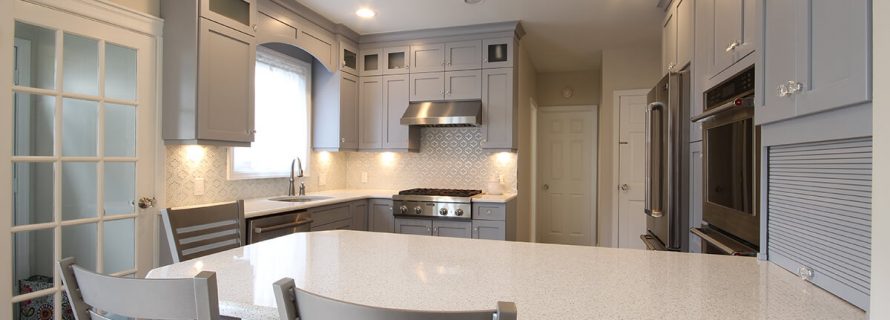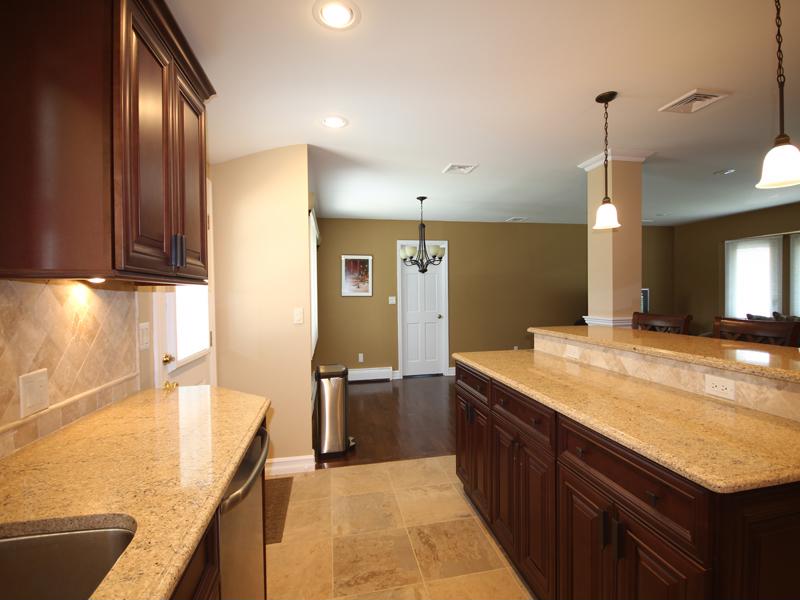Updating the kitchen through accent walls and textures

When remodeling the kitchen, there are a lot of different techniques and styles to consider in order to create a bold new look, but they don't have to be all or nothing. There are many trendy redesigns that only take a few small changes, but can breathe a whole new life into the room.
Changing the style of the walls is a great way to get a new look without having to do a total overhaul. Some are purely aesthetic while others are also functional. It all depends on a homeowner's personal style and finding a look that works.
"It all depends on a homeowner's personal style."
Getting creative with accent walls
Accent walls can help to break up the monotony of a traditionally painted room. Letting one wall stand out from the rest with a different pattern or color can be a small step that makes a big impression on the rest of the kitchen.
Typically, people apply an accent wall by painting one wall a different color than the others. This can be a different shade of the same color, contrasting colors or a splash of vibrant pigment paired up with neutral walls. The trick to creating an accent wall with different paints is to make sure that the colors have enough contrast without clashing. If the accent wall's color is too subtle, it doesn't really give the desired effect.
It's also important to choose the wall carefully when picking one to stand out. A wall that's obscured by large appliances or curtains, for example, may not be the place you want to choose for a pop of special color.
It doesn't have to just be about paint color, either. Accent walls can also be created through patterns and textures. A feature wall is a great place to use a desired wallpaper, tile or stone, for example. This is especially effective if the colors complement the rest of the walls.
There are so many possibilities when it comes to creating an accent in the kitchen that homeowners are able to really let their creativity come through without having to redo the entire room.
Function and style with kitchen back splashes
Adding a tile back splash is a great addition to the kitchen, because it can help give a whole new style while also improving the usability of that space. The back splash is the space between the counter and any overhanging cabinets. When food prep or other work is done on the countertop, messes can splatter onto the walls. When tile is there, it makes cleanup significantly simpler.
It also allows the homeowner to add more colors and texture to the room. It could be anything from a simple spread of monochrome tiles to a mosaic pattern. You could take this even further by adding a decorative inlay behind the stovetop to give it an extra pop of color. Mixing mosaic tiles with a soft color tile can highlight a portion of the kitchen without going overboard.
The process for applying tiles to the wall in the kitchen is similar to how they'd be added to the floor. The remodeler will need to start with carefully laid plans for how the tiles will be arranged before securing them to the wall.

Adding texture to kitchen walls
A fresh coat of paint can do wonders to update a room, but sometimes homeowners want to deviate away from the basics a bit. To give the walls in the kitchen a little more dimension, adding a plaster texture before applying the new color can be just the thing to mix things up.
There are two main ways to apply texture to a room's surfaces:
- Spray techniques use a machine to splatter plaster so that it clumps and dries in varying patterns. The velocity and size of the nozzle will impact what the final look will be.
- Hand techniques are put down by applying wet plaster to the wall or ceiling and using a trowel or other tools to create a 3-D pattern.
Spray techniques are more practical in new construction than remodeling, as these are very messy processes that are hard to control. Hand techniques are more suitable for a remodeling project, since they can be done in a more contained way.
There are many different patterns to choose from when adding hand-done texture to walls and ceilings, from swirls to rosebud stomps. Deciding which style to use is a personal style choice, and each method for creating the pattern will vary from the next.
There are plenty of fun and unique wall design options that can give homeowners a new look for their kitchens. It gives them the chance to be creative and find a style that best matches the room's personality.
- Additions and New Construction
- All Exteriors
- Alterations
- Basements
- Bathrooms
- Customer Service
- Customer Stories
- Decks
- Design & Planning Show
- DIY
- Doors
- Educational Resources
- Extreme Makeover Home Edition
- Fashion Show
- General Remodeling
- Green Living
- Handyman Home Services
- Home Decor
- Home Entertainment
- Home Improvement
- Home Improvements
- How to Tips
- In The Community
- Kitchens
- Off-the-Wall Remodeling Stories
- Remodeling
- Resources
- Roofing
- Siding
- Social Media
- Sunrooms
- Tips & Tricks
- Trends
- Windows

